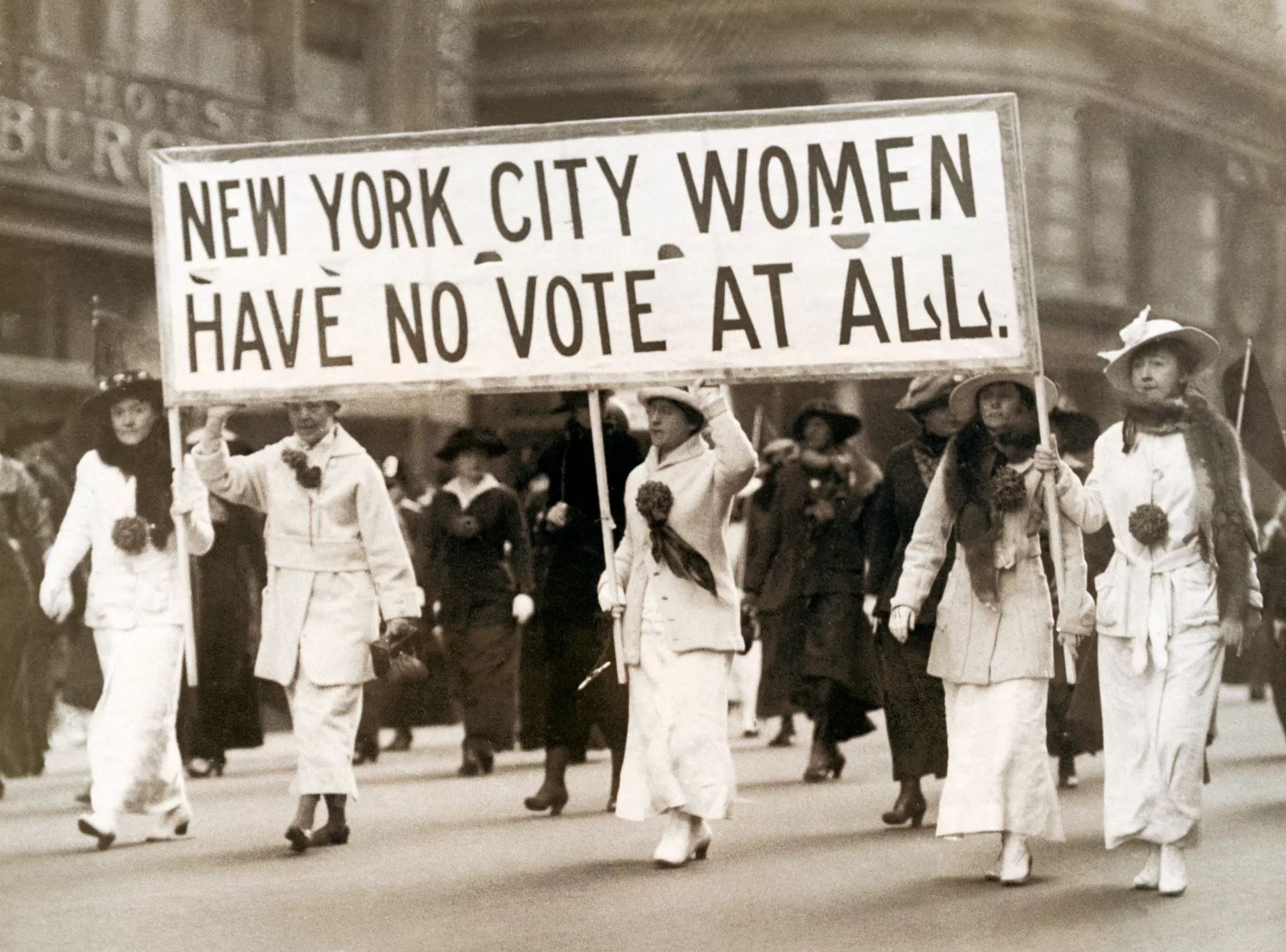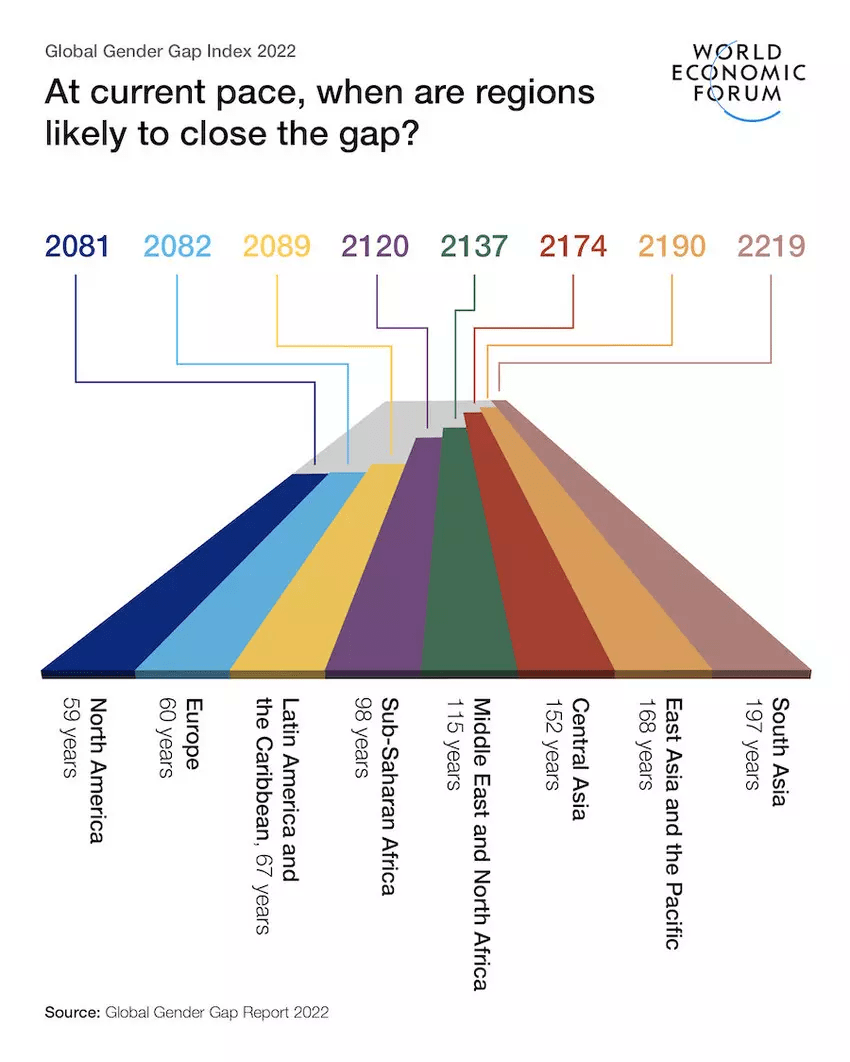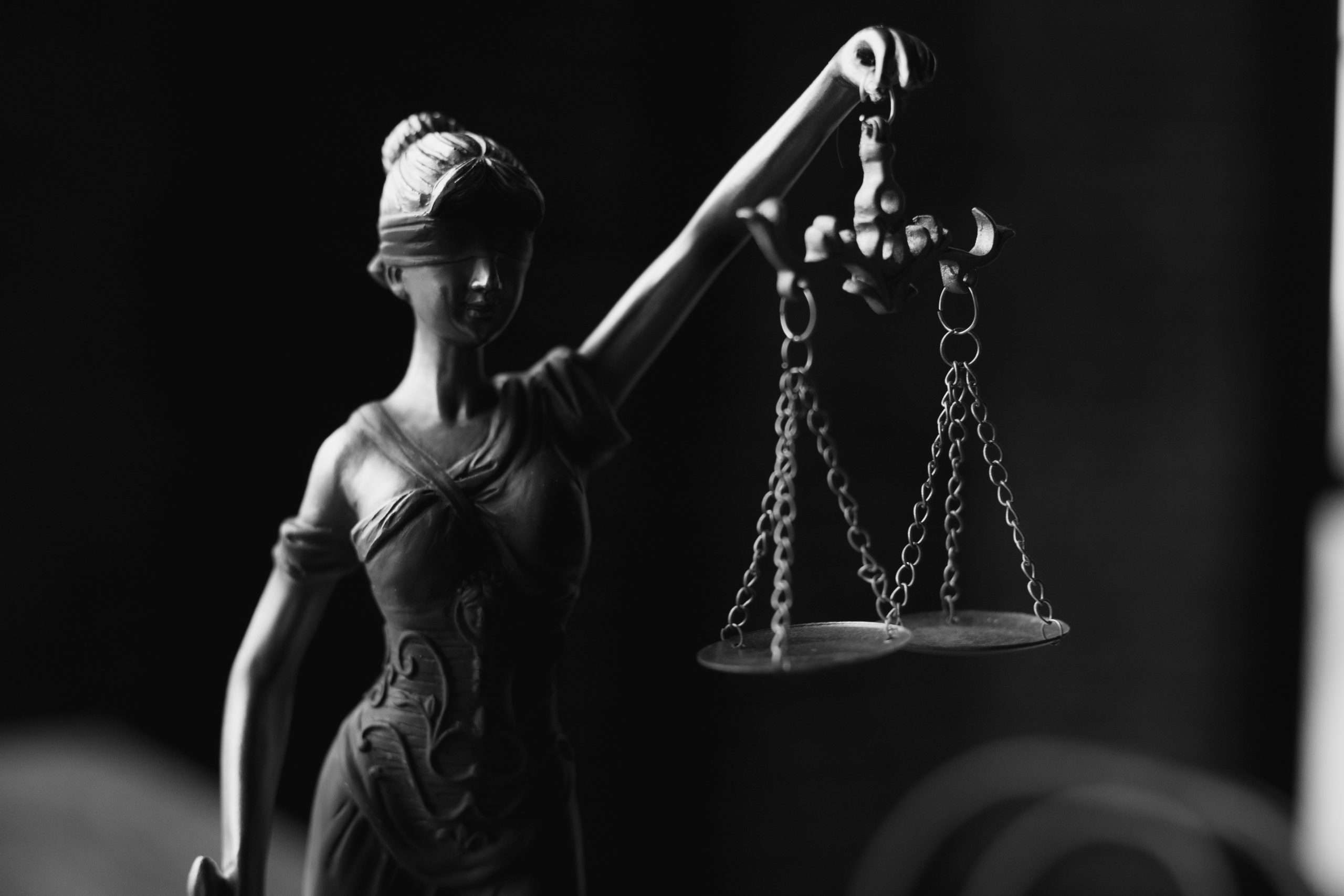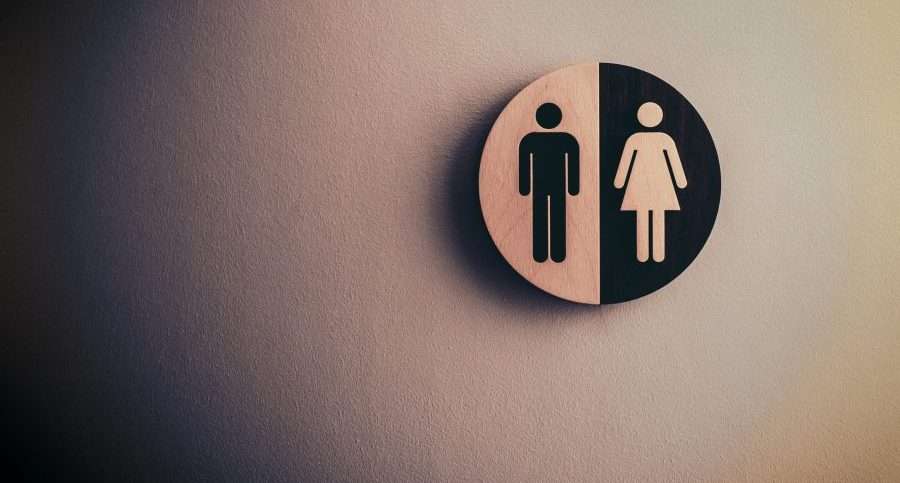“All human beings are born free and equal in dignity and rights… everyone has the right to life, liberty and security of person.”
Universal Declaration of Human Rights
Defining Gender Equality
Gender equality is the state of equal ease of access to resources and opportunities, regardless of gender. This includes economic participation, decision-making, and the state of valuing different behaviours, aspirations and needs equally- regardless of gender. Does the future of gender equality lie in the hands of the next generation? Modern humanity is becoming increasingly invested in gender equality when compared with previous generations. We all live on the same Earth. Gender equality prevents violence against women and girls. It’s essential for economic prosperity. Societies that value all genders as equal are safer and healthier.
Initially, in the late 19th century, gender equality really started to gain traction, with the suffragette movement. Western culture sought to allow women to vote and hold elected office. This changed property and land rights for women, progressing sustainable development. According to the United Nations, there is no country on Earth with gender equality- in fact, we will not achieve it by 2030- as per current growth rates. Research from human rights careers suggests that gender equality is a better indicator of a country’s likelihood to deploy military force than its GDP. It seems that improving gender equality is the same as improving a country’s peace.

Source: Dorling Kindersley Limited
What impact does gender equality have on the world?
Globally, women account for only 38 per cent of human capital wealth versus 62 per cent for men. In low and lower-middle-income countries, women account for a third or less of human capital wealth. They have more access to education, health, political representation and general safety. Most developing countries have a serious issue with inequality between genders, affecting the building of human and social capital, job opportunities and wages.
should all genders desire equality?
All genders should be equal. It’s a human right that prevents violence against women and girls. Societies would be safer and healthier if all humans had the same values and equal opportunities. Globally, women are restricted, and human rights are lacking severely in developing countries such as Saudi Arabia. Women in Saudi Arabia have very few rights.
“Traditionally, (Saudi Arabian) females are secluded from most public decision-making and are expected to obey their fathers, brothers and husbands.”
Cultural Atlas
Women in this part of the world rely on their fathers, husbands and male counterparts to undertake every personal and socio-economic task. Countries like Egypt and Bahrain require written permission from husbands if women desire to leave their country of origin. The ownership of land by women has been restricted in some countries even if their constitution claims equal rights. In many countries including North Sudan, Tanzania and Lesotho, land ownership and control tend to go to the male head of the household. In Zambia, both genders are allowed to acquire a registered land title, but women cannot be allocated land without the approval of their husbands.
the future of gender equality in the Workplace
While there are many paths to addressing gender equality in the world of work, they must ultimately unite to reinforce each other. Men and women have almost polar opportunities in the workforce. Globally, men have better job freedoms and wages, which means lower income for women. This is unjust and discriminatory. Even in developed countries, women are at a disadvantage, as the highest-paying jobs are dominated by men. Women are paid 77 per cent less than men. It could take a full 45 years before gender inequality disappears at this rate.
Human Rights
There are many issues fueling gender inequality in the workplace, such as unequal pay, sexual harassment, racism, and inequality, obliterating the suggestion that women might be paid what they’re worth. American women are increasingly more educated than men on average, but they still don’t receive equal pay. Women are promoted less often than men, even with equal ability and talent. Female workers are also fearful of requesting to be paid what they are worth, despite knowing what they deserve.
There are 5 ways to improve gender equality in the workplace. These include the removal of the gender pay gap, skills-based assessments, longer shortlists when recruiting, and allowing women to mentor men. A decent work-life balance is a priority, and there is a slow pace of progress. Working towards gender equality in the workplace will take another 100 years based on the current rate of progress. The Global Gap Report’s prediction has been widely used as shock therapy to push governments, NGOs, associations, investors and companies into action.

Source: World Economic Forum
Why is gender equality good for the economy?
“Gender equality goes hand-in-hand with macroeconomic and financial stability, can stimulate economic growth, boost private and public sector performance, and reduce income inequality.”
International Monetary Fund
There is much evidence that gender equality can enhance economic productivity and improve development outcomes for future generations. In turn, this might create institutions and policies that are more effective in representing and supporting sustainable development, focusing public action on developing countries. Obtaining opportunities for education and jobs for women could benefit human capital and capabilities within households and entities.
countries edging their way towards achieving equality?
Additionally, according to the Gender Inequality Index, there are at least 50 countries (globally) with high rates of attempting to achieve gender equality. Among them, Switzerland was the most gender-equal country in the world in 2020. Remarkably, Denmark, Sweden, Belgium, Netherlands, Norway, Finland and France are performing better, and are predominantly closer to achieving it. There are five key sectors in recent years that have developed an indication that women are pushing for inclusion.
Politics
More women are undeniably edging toward political representation, boardrooms, education, maternity leave and even protesting. In the National Council (lower house), 42% of female candidates have represented, ranking ahead of Denmark, the UK and France, according to the Inter-Parliamentary Union. In June 2019, the Swiss parliament approved a government proposal calling for better representation for women at the top level of large publicly traded companies, affecting around 250 entities. The Council of States (upper house) voted in favour of the proposal, which was also narrowly approved by the National Council (lower house), by just one vote. In Switzerland, more young women have been completing higher vocational training or education than men. Statistically, women are participating in more political protests, having a significant impact on changing laws, habits, and mindsets.
Denmark ranks 2nd in the EU on the Gender Equality Index. Thus, the percentage of female members of boards of publicly listed companies has increased in economic decision-making from 17% to 33%, in the last 10 years. The percentage of women graduating with degrees has increased from 27% to 34% within eight years. In parliament, female members have increased from 38% to 40% within ten years from 2010 to 2020.

Source: Pexels
What could occur if we don’t promote gender equality?
Currently, men have more opportunities for economic participation than women, globally. Women have less access to basic and higher education, health and safety risks and political representation. While there is a lack of gender equality in the world, social and economic development will remain disparate, and there will be poverty, disease and environmental degradation.
“Gender discrimination means that women have far fewer resources to cope. They are likely to be the last to eat, the ones least likely to access healthcare, and routinely trapped in time-consuming, unpaid domestic tasks.”
UN Women Australia
Can we achieve gender equality?
According to the 2022 Global Gender Gap Report, there are four indexes that help to measure and determine global gender equality. Subsequently, this includes political empowerment, educational attainment, health, survival, economic participation and opportunity. We should start dialogues with women and girls so they can obtain chances and opportunities and express how they feel regarding gender equality. There is a need to ensure safe and empowering opportunities for women and girls. We need to empower all females, stop child marriage and sexual harassment immediately, and build on the human rights of children, girls and women. In most countries, men and women don’t get the same chances and opportunities to further their education. This is one of the main barriers to a positive future of gender equality. Women need power in decision-making, fusing economics and politics. We need to recognise the value of a woman’s work!
How do we shape the future of gender equality?
We need to emphasise gender equality as a central concern, rather than an afterthought. Planet Earth needs a strategy if humanity is to survive and endure long term. Businesses and governing bodies have aided in Earth’s demise by contributing to climate change, perpetrating abuse, social injustice, corruption, poverty and inequality, pillaging natural resources, and polluting. Gender equality can’t wait. If we want gender equality in the future, children need equal opportunities that support their health and well-being. Gender equality endorses safer and healthier communities. Closing gender gaps in legal protection and the removal of discriminatory laws against women is essential. Equal representation in positions of power and gender parity in governing bodies will also improve well-being.

Source: Skillcast
Achieving The United Nations Sustainability Development Goals (SDGs) And the Future of gender equality
“Gender equality is considered paramount to the success of the Sustainable Development Goals and incorporated into global health programming and delivery, but there is great gender disparity within global health leadership and an absence of women at the highest levels of decision making.”
National Library of Medicine
In some countries, women are more than twice as likely as men to experience discrimination on the grounds of gender. It seems that there are many solutions to the problem. Humanity cannot face them all at once, but SDGs provide governance and guidelines for mitigation. Firstly, recognising the United Nations SDGs, and taking steps toward SDG5 swiftly endorses a mobilisation of this fundamental human right.
As a necessary foundation for a peaceful, prosperous and sustainable world, the implementation of SDG10 can ensure that no one is left behind. SDG8 promotes inclusive and sustainable economic growth, employment and decent work for all women and girls. SDG4 endorses equal access for all genders to free, equitable and quality primary and secondary education. Finally, SDG16 promotes peaceful and inclusive societies, promoting access to justice for all. Women and girls everywhere should be free of fear from all forms of violence and feel safe as they go about their lives whatever their ethnicity, faith or sexual orientation. We must achieve the Sustainable Development Goals!
A Thrivable Framework
The world is changing at an unprecedented rate. We are already experiencing deep inequality and injustice. There is much evidence that these adverse conditions will only increase in frequency and severity. Faced with the complexity and uncertainty of the world we live in, how can we, as individuals (and collectively) ensure our long-term providence and prosperity? How can we move away from so much death, disease, and gender inequality? How do we ensure a resilient and regenerative society, re-engineered for sustainability and ‘thrivability‘?
THRIVE’s belief is that humanity can do better with the knowledge currently available to us. By being aware of the issues facing women and girls globally, who are not given equal human rights, we can act upon this information effectively, to combat threats to individual well-being. THRIVE’s mission is not just to offset disaster, but to allow for a society in which all genders have the capacity to flourish.
THRIVE Framework examines issues and evaluates potential solutions – making predictive analyses using topics such as this, that support environmental and social sustainability transformations. By researching, educating and advocating for gender equality, THRIVE hopes to encourage the safeguarding of individual human rights protections, creating a more thrivable world and a future beyond sustainability.
For further insight into gender equality and, more broadly, equality in employment, visit Thrivability Matters for an informative, diverse blog and podcast series. Join us in advocating for equal human rights and social issues, or take a deep dive into ecofeminism and environmental issues with us. Take part in THRIVE’s regular live webinars, featuring expert guests in diverse fields, advocating for peace, humanity and sustainability. You can also sign up for our newsletter to receive regular updates.